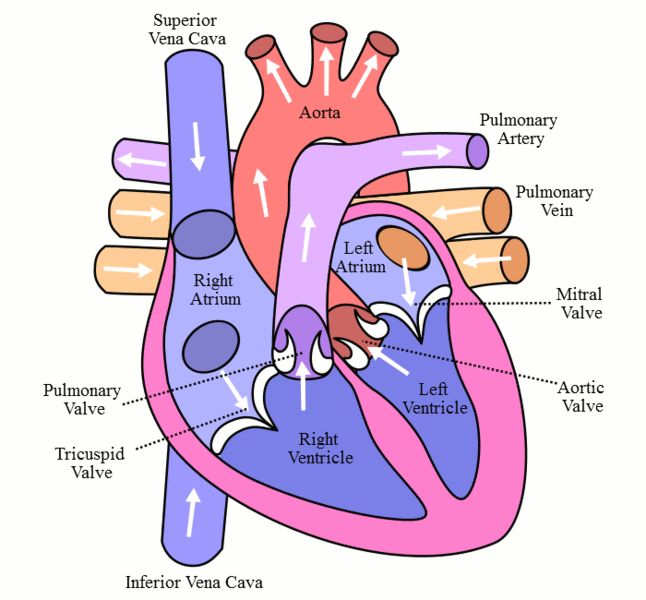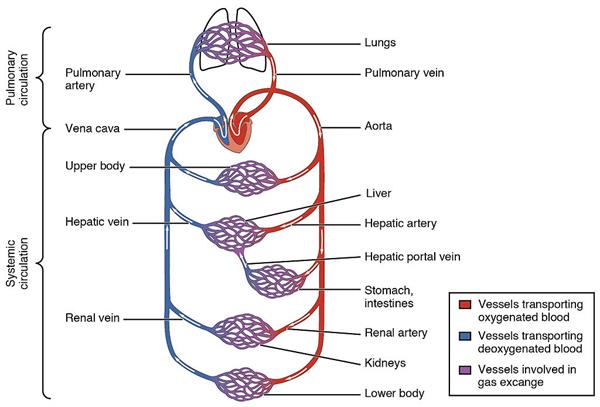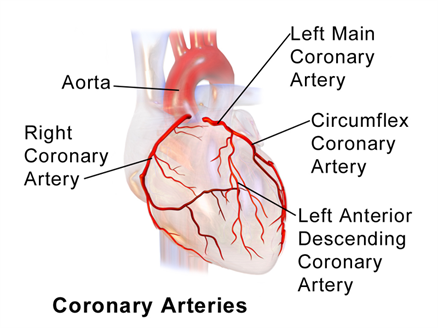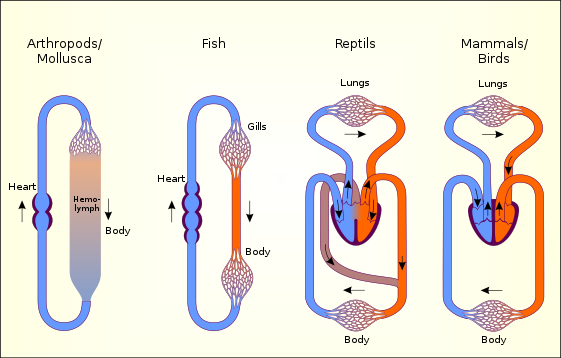
PUMPA - SMART LEARNING
எங்கள் ஆசிரியர்களுடன் 1-ஆன்-1 ஆலோசனை நேரத்தைப் பெறுங்கள். டாப்பர் ஆவதற்கு நாங்கள் பயிற்சி அளிப்போம்
Book Free Demo
Circulation of blood in the heart
2. The right atrium pumps the blood to the right ventricle. Thus, the deoxygenated blood from the right atrium is sent to the right ventricle.
3. The right ventricle contracts, and the blood enters the pulmonary artery. The pulmonary trunk emerges from the right ventricle and divides into right and left pulmonary arteries. The right and left pulmonary arteries supply deoxygenated blood to the right and left lungs, respectively.
Through the pulmonary artery, blood is pumped to the lungs for oxygenation. At the lungs, the exchange of gases takes place.
4. Pulmonary veins bring oxygenated blood from the lungs to the left atrium. The left atrium relaxes during the process to collect the oxygenated blood.
5. From the left atrium, the blood reaches the left ventricle due to the contraction of the left atrium. The oxygenated blood is forced into the ventricle through the atrioventricular openings by the atrial contraction.
Important!
The left ventricle is longer and narrower than the right ventricle. The left ventricle walls are nearly \(three\) times thicker than the right ventricle.
6. Next, the left ventricle contracts and blood is pumped out to the various parts of the body through the aorta. The aorta supplies the oxygenated blood to various parts of the body. The coronary arteries supply blood to the heart.
Aorta is the largest artery present in the body, taking oxygenated blood to various organs and muscles.
Types of blood circulation:
The blood circulates in the body as oxygenated and deoxygenated blood. There are three types of circulation:
1. Systemic circulation:
The flow of oxygenated blood from the left ventricle to the various parts of the body and the return of deoxygenated blood to the right atrium is called systemic circulation.
2. Pulmonary circulation:
The flow of deoxygenated blood from the right ventricle to the lungs and the return of oxygenated blood from the lungs to the left atrium is called pulmonary circulation.

Pulmonary and systemic circulation
3. Coronary circulation:
The supply of blood to the cardiac muscles (heart muscles) is called coronary circulation.
The coronary arteries that branch off from the aortic arch supply oxygenated blood to the cardiac muscles. Deoxygenated blood from the cardiac muscles is drained into the right atrium by the coronary sinuses.

Coronary circulation
Double circulation:
As the blood circulates twice through the heart in one complete cycle, it is called double circulation.
Circulation of blood in different organisms:
The separation of the heart is important to avoid the mixing of oxygenated and deoxygenated blood. The separation also allows for an efficient supply of oxygen to the body.
All the vertebrates have a chambered and muscular heart. However, in some animals, the deoxygenated and oxygenated blood is mixed and goes through the heart only once. This type of circulation is called single circulation.
Example:
Fishes, amphibians and certain reptiles are examples of organisms that have a single circulation.
- Aquatic organisms like fishes have only \(two\) chambers. They have an atrium and a ventricle.
- Amphibians have \(three\) -chambered heart - \(two\) atria and \(one\) ventricle are present. Reptiles (except crocodiles) have an incomplete \(four\)-chambered heart.
- Aves, mammals, and crocodiles have \(four\)-chambered heart.

Circulation in different organisms
Reference:
https://commons.wikimedia.org/wiki/File:Blood_Circulation.gif
https://commons.wikimedia.org/wiki/File:Blausen_0256_CoronaryArteries_02.png
https://commons.wikimedia.org/wiki/File:2101_Blood_Flow_Through_the_Heart.jpg
https://commons.wikimedia.org/wiki/File:Circulatory_systems_in_the_animal_kingdom.svg